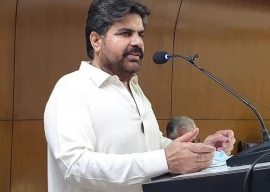
They bought homes with gardens there to get away from the inner city pollution and sanitation, epidemics, political instability, strikes, rioting. At one point, 84% of people had house with a garden, a trend supported by a state housing policy for a long time.
On Saturday, architect and planner Christophe Polak brought up this refreshing example at the 7th NED seminar on urbanisation and secondary cities. The curious case of Brussels demonstrates, in part, how spreading out a city’s population can actually not be as beneficial as it may seem.
This trend developed as an outcome of a push from the government, the effects of industrialisation and pressure from the Catholic church. Owning individual houses with gardens in the surrounding countryside became a romantic ideal for people who wanted to move out of the congested medieval neighbourhoods in the heart of the city.
The government backed it and developed a public transport system to get people away from the city. It started to densify a railway network. A housing law made it possible for local housing companies to make it easier for people to buy a house. Much of this was aimed at countering socialist (and hence anti-Church) ideas of collective housing.
The government kept trying to attract people to the outside of the city by developing ‘garden neighbourhoods’. “The idea was to forget about the city centre and get out of the city,” said Polak. People thought it was the best place to bring up their children.
The government started a cleanup campaign in the centre of the city to create a look of paradise on earth. New parks were built with an ideal of paradise on earth. But they were not really for the ‘common’ people – they were only for the elite. “They were decoration rather than recreation,” explained Polak. “They were full of rules and regulations: do not walk on the grass. City squares [were built] but just became decorative.” He added that in Karachi we were seeing something similar develop.
But then, 1988 was a turning point because of the election. For the first time the extreme right won. The government realised that this urban sprawl was not financially sustainable. “Proximity was redefined,” he said. “The government [realised] that it was all spread out, there were no clusters. Public transport became an issue.” Vacancy and slum housing developed.
New laws were passed but didn’t do much after 200 years of convincing people to get out of the city.
Finally, in 1997, a new spatial structure plan for Flanders was developed and was different from a land use plan: it wasn’t about zones, it was about dynamic movement. The government realised that it needed to take a different approach if it wanted to persuade people to come back to the city. And that is where Karachi can learn a thing or two.
“Human activities need to be accommodated,” Polak explained. So, for example, the planners looked at a public space, estimated the maximum capacity and then built on that. The idea of shared public spaces was stressed, shared garden space instead of individual houses with gardens. Flats were built around a shared public garden.
In the last couple of years the government is trying to revive a unique idea of neighbourhood contracts before going ahead with development or planning. Plans are put up in a neighbourhood that needs some change and people are invited to write their comments down. This way, ownership is encouraged rather than a city government forcing an idea down people’s throats. Passers-by can give their input as well.
This has especially helped in the centre of the city which is mostly occupied by third and second generation immigrant Turkish and Moroccan families. It becomes a more inclusive process, involving the residents themselves.
Published in The Express Tribune, April 2nd, 2012.


















COMMENTS
Comments are moderated and generally will be posted if they are on-topic and not abusive.
For more information, please see our Comments FAQ